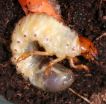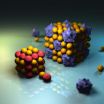(Press-News.org) Scientists at The University of Manchester have identified a protein that appears to hold the key to creating more effective drug treatments for melanoma, one of the deadliest cancers.
Researchers funded by Cancer Research UK have been looking at why new drugs called "MEK inhibitors", which are currently being tested in clinical trials, aren't as effective at killing cancer cells as they should be.
They discovered that MITF - a protein that helps cells to produce pigment but also helps melanoma cells to grow and survive - is able to provide cancer cells with a resistance to MEK inhibitors.
Dr Claudia Wellbrock and her team at the Wellcome Trust Centre for Cell-Matrix Research compared human melanoma cells that respond to the drug to cells that don't. They discovered that the cells that didn't respond to the drug contained higher levels of the protein SMURF2.
The researchers reduced the level of SMURF2 in the melanoma cancer cells and then treated the tumour with the MEK inhibitor. They found a 100 fold increase in the sensitivity of the cells to the drug. It appears that removing SMURF2 radically decreases the level of MITF in melanoma cells, making the MEK inhibitor a lot more powerful.
Using mice with tumours the team found that over a three week period there was a substantial decrease in tumour growth when the removal of SMURF2 was used in combination with MEK inhibitors.
Dr Wellbrock says: "Much of cancer research is now focussed on finding new drug combinations. It's recognised that cancers frequently find new ways to combat even the most novel and highly efficient drug treatments, so we are now focussing on targeting the mechanisms that allow the cancer cells to overcome the drug effects. We're very excited about the potential for this new approach that has proved to be so effective in our experiments."
One of the drawbacks of the MEK inhibitor drug is that it targets all cells. MEK (MAP/ERK kinase protein) is present in all cells but cancer cells have overactive MEK. This means the drug must be used in small doses and for a lengthy period to avoid harming healthy cells. By reducing SMURF2 to increase the drug's effectiveness smaller doses could be given over a shorter time period, reducing the level of toxicity in healthy cells.
Dr Wellbrock says: "If we can reduce the toxicity to all cells it will mean cancer treatments are less harmful to patients. It's vital that we improve the treatments for melanoma which is the fifth most common cancer in the UK. By the time many people are diagnosed with melanoma the cancer has already started to spread and advanced tumours can be highly resistant to conventional cancer treatments. The development of resistance to new drugs has also been a major drawback. If we can identify more potent and less toxic drug combinations to tackle melanoma then we could save thousands of lives."
This study was funded in part by Cancer Research UK and the results have been published in the Journal of the National Cancer Institute.
Talking about the research Dr Julie Sharp from the charity said: "Recently there have been some really exciting developments in treating melanoma – but new approaches that tackle the problem of resistance are still needed. This type of research will be a key focus of the planned new Manchester Cancer Research Centre which will bring together a wide range of research expertise to revolutionise cancer treatment."
The next step for Dr Wellbrock will be to find a drug that can reduce the activity of SMURF2 in cancer cells. The Manchester research team are now screening drug libraries for an existing drug that may already be approved for use for a different illness.
It's hoped that identifying a drug to use in combination with MEK inhibitors will provide a much more powerful and ultimately more successful approach to treating melanoma.
### END
Better approach to treating deadly melanoma identified by scientists
2012-12-19
ELSE PRESS RELEASES FROM THIS DATE:
Fast-acting enzymes with 2 fingers: Protein structurally and dynamically explained
2012-12-19
Researchers at the RUB and from the MPI Dortmund have uncovered the mechanism that
switches off the cell transport regulating proteins. They were able to resolve in detail how the central switch protein Rab is down-regulated with two "protein fingers" by its interaction partners. The structural and dynamic data is reported by the researchers led by Prof. Dr. Klaus Gerwert (Chair of Biophysics, RUB) and Prof. Dr. Roger S. Goody (Max Planck Institute for Molecular Physiology, Dortmund, Germany) in the Online Early Edition of the journal PNAS. "Unlike in the cell growth protein ...
Badger sleeping habits could help target TB control
2012-12-19
Scientists found that badgers which strayed away from the family burrow in favour of sleeping in outlying dens were more likely to carry TB.
The 12-month study of 40 wild badgers was funded by the Department for Environment, Food and Rural Affairs (Defra) and could have implications for the management of bovine TB in parts of the UK. The behaviour of individual animals is thought to be a key factor in how the disease is spread among animals and livestock. The new findings could help to understand and develop measures to manage TB in badgers.
The study is published ...
The role of the innate immune cells in the development of type 1 diabetes
2012-12-19
The researchers reveal the role of the innate immune cells, especially the dendritic cells, that cause the activation of the killer T-lymphocytes whose action is directed against the p pancreatic cells. The results obtained in mice make it possible to consider new ways of regulating the auto-immune reaction generated by the innate immune cells.
Type 1 diabetes, or insulin-dependent diabetes, is an auto-immune disease characterised by the destruction of insulin-producing pancreatic β cells that are present in the Islets of Langerhans which are themselves in the pancreas. ...
Not without my microbes
2012-12-19
Apart from the common European cockchafer (Melolontha melolontha), the European forest cockchafer (Melolontha hippocastani) is the most common species of the Melolontha genus. These insects can damage huge areas of broadleaf trees and conifers in woodlands and on heaths. Cockchafers house microbes in their guts that help them to digest their woody food, such as lignocelluloses and xylans. Scientists of the Max Planck Institute for Chemical Ecology in Jena, Germany, have now performed comprehensive RNA analyses and identified the microbiota of cockchafer larvae feeding on ...
Scale-up of a temporary bioartificial liver support system described in BioResearch Open Access
2012-12-19
New Rochelle, NY, December 19, 2012—Acute liver failure is usually fatal without a liver transplant, but the liver can regenerate and recover if given time to heal. A bioartificial liver machine that can provide temporary support while organ regeneration takes place has been scaled up for testing in a large animal model and is described in an article in BioResearch Open Access, a bimonthly peer-reviewed open access journal from Mary Ann Liebert, Inc., publishers. The article is available on the BioResearch Open Access website .
A team of researchers from University College ...
When the ice melts, the Earth spews fire
2012-12-19
In 1991, it was a disaster for the villages nearby the erupting Philippine volcano Pinatubo. But the effects were felt even as far away as Europe. The volcano threw up many tons of ash and other particles into the atmosphere causing less sunlight than usual to reach the Earth's surface. For the first few years after the eruption, global temperatures dropped by half a degree. In general, volcanic eruptions can have a strong short-term impact on climate. Conversely, the idea that climate may also affect volcanic eruptions on a global scale and over long periods of time is ...
Paper waste used to make bricks
2012-12-19
Researchers at the University of Jaen (Spain) have mixed waste from the paper industry with ceramic material used in the construction industry. The result is a brick that has low thermal conductivity meaning it acts as a good insulator. However, its mechanical resistance still requires improvement.
"The use of paper industry waste could bring about economic and environmental benefits as it means that material considered as waste can be reused as raw material." – This is one of the conclusions of the study developed by researchers at the Upper Polytechnic School of Linares ...
New dynamic dual-core optical fiber enhances data routes on information superhighway
2012-12-19
Optical fibers –the backbone of the Internet–carry movies, messages, and music at the speed of light. But for all their efficiency, these ultrathin strands of pristine glass must connect to sluggish signal switches, routers, and buffers in order to transmit data. Hoping to do away with these information speed bumps, researchers have developed a new, dual-core optical fiber that can perform the same functions just by applying a miniscule amount of mechanical pressure.
These new nanomechanical fibers, which have their light-carrying cores suspended less than 1 micrometer ...
Cholesterol helps regulate key signaling proteins in the cell
2012-12-19
Cholesterol plays a key role in regulating proteins involved in cell signaling and may be important to many other cell processes, an international team of researchers has found.
The results of their study are reported in the journal Nature Communications.
Cholesterol's role in heart disease has given it a bad reputation. But inside the thin membrane of a cell, the tight regulation of cholesterol at high levels (30 to 40 percent) suggests that it plays an important role in cellular processes, says Wonhwa Cho, professor of chemistry at the University of Illinois at Chicago ...
Synthetic and biological nanoparticles combined to produce new metamaterials
2012-12-19
Scientists from Aalto University, Finland, have succeeded in organising virus particles, protein cages and nanoparticles into crystalline materials. These nanomaterials studied by the Finnish research group are important for applications in sensing, optics, electronics and drug delivery.
Layer structures, or superlattices, of crystalline nanoparticles have been extensively studied in recent years. The research develops hierarchically structured nanomaterials with tuneable optical, magnetic, electronic and catalytic properties.
Such biohybrid superlattices of nanoparticles ...




